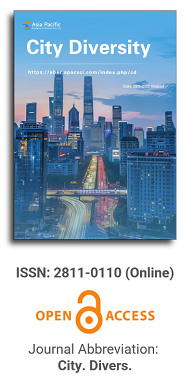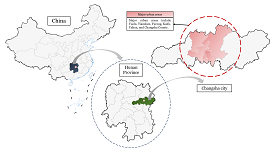
Asia Pacific Academy of Science Pte. Ltd. (APACSCI) specializes in international journal publishing. APACSCI adopts the open access publishing model and provides an important communication bridge for academic groups whose interest fields include engineering, technology, medicine, computer, mathematics, agriculture and forestry, and environment.

As China's pillar industry, the property market has suffered a considerable impact in recent years, with a decline in turnover and many developers at risk of bankruptcy. As one of the most concerned factors for stakeholders, housing prices need to be predicted more objectively and accurately to minimize decision-making errors by developers and consumers. Many prediction models in recent years have been unfriendly to consumers due to technical difficulties, high data demand, and varying factors affecting house prices in different regions. A uniform model across the country cannot capture local differences accurately, so this study compares and analyses the fitting effects of multiple machine learning models using February 2024 new building data in Changsha as an example, aiming to provide consumers with a simple and practical reference for prediction methods. The modeling exploration applies several regression techniques based on machine learning algorithms, such as Stepwise regression, Robust regression, Lasso regression, Ridge regression, Ordinary Least Squares (OLS) regression, Extreme Gradient Boosted regression (XGBoost), and Random Forest (RF) regression. These algorithms are used to construct forecasting models, and the best-performing model is selected by conducting a comparative analysis of the forecasting errors obtained between these models. The research found that machine learning is a practical approach to property price prediction, with least squares regression and Lasso regression providing relatively more convincing results.
From cultural diversity to creative city: theoretical logic and practical exploration of the gourmet city
Vol 1, Issue 1, 2020
Download PDF
Abstract
The construction of creative cities is an important choice for the current urban transformation and development. Taking the “city of gastronomy” of UNESCO creative cities network as the research object, this paper analyzes the impact of cultural diversity on creative cities. Based on the theoretical connotation of creative cities and the logical analysis of the relationship between cultural and creative industries and creative cities, this paper puts forward the theoretical basis for the construction of “food city”, and constructs the urban food creative system from four aspects: urban food culture, creative community, environment and atmosphere, investment and financing, and intellectual property protection. On this basis, combined with the group characteristics of the “food city” and the case of Yangzhou, this paper analyzes the practical process and key issues of creating the “food city”, and summarizes the experience and Enlightenment from the “food city” to the creative city.
Keywords
References
- Qian F, Guan T. Influence of traditional food on urban tourism image and Its Development Coun-termeasures -- Taking “Eight Wonders of Qinhuai River” in Nanjing as an example. Food research, 2017, 34 (1): 29 – 34.
- Hu H. Cultural Ecological Security: a new cognitive system of the modernity of national cultural security. International security research, 2017 (3): 36 – 56.
- Yu P. Anti “cultural globalization” -- Reflection on cultural diversity under the background of economic globalization. Research on historical theory, 2004 (4): 26 – 37.
- Chen Y. Research on spatial governance of urban renewal in China during the transition period: mechanism and model. Nanjing: Nanjing University, 2016.
- Fang T, Zeng G. Spatial distribution characteristics and spatial impact of Shanghai Creative Industry Parks. Social scientist, 2011 (8): 59 – 63.
- Huang Y, Lv Q. Enlightenment of the development of public space in western cities on the construction of creative cities in China. Economic geography, 2011 (8): 1283 – 1288.
- Gan L, Tang Y. International experience and local-ization construction of creative cities. International urban planning, 2012, 27 (3): 53 – 58.
- Holpers GJ. Creative cities: breeding places in the knowledge economy. Knowledge, Technology and Policy,2003,16(3) : 143–162.
- Landry C. The Creative city: A Toolkit for Urban Innovators. London: Earthscan Publications,2000.
- Florida R.The Rise of Creative Class. New York: Basic Books, 2002.
- Glaeser EL, Kahn ME. Sprawl and urban growth. Handbook of Regional and Urban Econom-ics,2004,4: 2481–2527.
- Carta M. Culture,communication and cooperation: the three Cs for a proactive creative city. Interna-tional Journal of Sustainable Develop-ment,2009,12(2–4) : 124–133.
- Han B. The evolutionary nature of creative practice system of cultural and creative industries. Journal of Shanghai University of Finance and economics, 2016 (1): 25 – 34.
- Lu H, Feng Shi. Research on the development of Creative Cities Based on creative industries and creative clusters. Journal of Zhengzhou University (PHILOSOPHY AND SOCIAL SCIENCES), 2015 (4): 83 – 86.
- Zhou S, Li C. Mechanism of cultural and creative industries driving urban transformation. Social Sciences, 2014 (2): 66 – 75.
- Zhao J. Research on urban transformation and de-velopment and cultural and creative industries. Academia, 2014 (11): 221 – 228.
- Yang X, Guo Y. Evolution mechanism of cultural and creative industries promoting urban innovation capability and its policy implications. Journal of xi’anjiaotonguniversity (SOCIAL SCIENCE EDI-TION), 2013 (3): 5 – 12.
- Li J, Wan C. Research on the interactive mecha-nism between cultural and creative industries and urban economic development. Shanghai Economic Research, 2018 (1): 45 – 53.
- Fearless Food Chengdu in the development and transformation of creative cities. Tuanjie, 2010 (6): 27 – 29.
- Zhan Y, Cheng X. Global Creative Cities Network “city of gastronomy”: international standards and Localization Practice. Journal of central China Normal University (HUMANITIES AND SOCIAL SCIENCES), 2016, 55 (6): 76 – 86.
- Wang L. Cultural diversity: value concept, meas-urement and Enlightenment of creative cities. Fujian Forum (HUMANITIES AND SOCIAL SCIENCES), 2016 (12): 167 – 174.
- Li X. Highlight differentiation and enhance soft power -- global creative cities have their own char-acteristics [eb/ol] [2015–01–15] Http://www.cssn.cn/ hqxx/201501/ t201501151479827. Shtml? COLLCC = 2223273558&,2015–01–15.
Supporting Agencies
Copyright (c) 2020 Bing Hou, Lei Yang, Qian Chen

This work is licensed under a Creative Commons Attribution 4.0 International License.

This site is licensed under a Creative Commons Attribution 4.0 International License (CC BY 4.0).

Prof. Mehmet Cetin
Kastamonu University,
Turkey
Polish Scientific Bibliography

